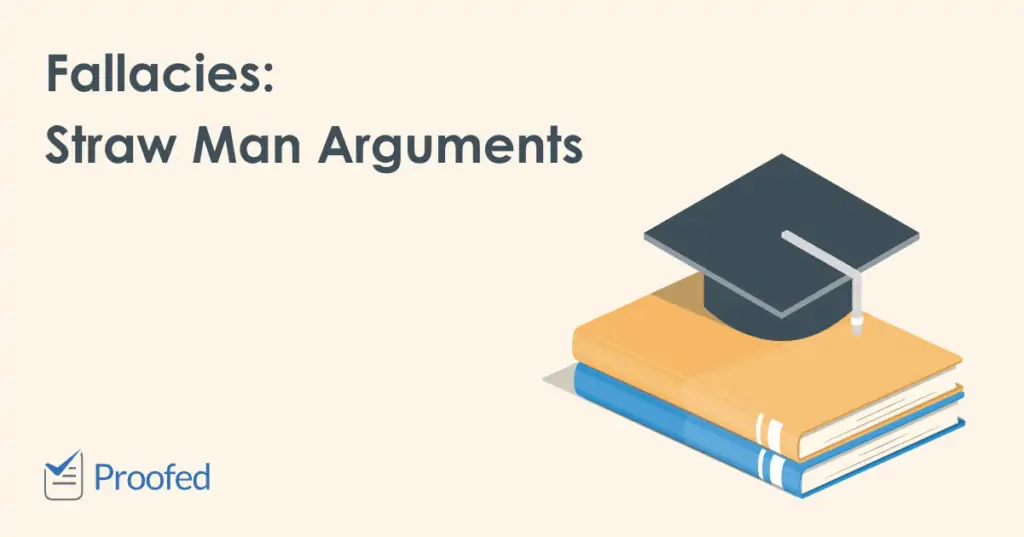Sadly, straw man arguments do not involve literal scarecrows. Rather, they are a type of fallacy: i.e. an argument that sounds convincing but contains hidden mistakes. But what exactly does a straw man argument involve? And how can you avoid them in your written work?
What Is a Straw Man Argument?

Building a ‘straw man’ implies constructing an idea that is easy to argue against rather than engaging with the real issue. This typically involves distorting your opponent’s ideas or beliefs to make it easier to refute them (even if you’re not ‘refuting’ their actual arguments).
For example, imagine an argument between Cheryl and Bob:
Cheryl: Parents have a responsibility to expose their kids to learning at home as well as at school.
Bob: Pedagogical theories that claim children don’t benefit from school are no use to anyone.
Bob’s argument here is a ‘straw man’ because he has misinterpreted what Cheryl was saying. And instead of responding to her suggestion that education can occur outside the classroom, he is arguing against something she never said: that children don’t benefit from school.
Find this useful?
Subscribe to our newsletter and get writing tips from our editors straight to your inbox.
Most straw man arguments are subtler than this. But they all involve misrepresenting someone to make it easier to win an argument.
How to Avoid Straw Man Arguments
It is possible to make a straw man argument without realising it. This can happen, for example, if we don’t fully understand something that we are arguing about in an essay.
As such, to avoid this fallacy in your work, you should always:
- Read your source closely. And when you’ve read it once, re-read it so you have a full understanding of what the author is saying.
- Keep close track of your sources and cite them clearly. This will ensure you’re always engaging closely with the person you’re arguing against.
- Be charitable when interpreting your opponent’s arguments. Are you sure they mean what you think they mean? What else could they be saying?
- Look for sources that defend the position you’re arguing against. If they make good points, acknowledge and engage with these ideas in your work.
- Remember you’re trying to find the truth. If you need to distort someone’s ideas to beat them in an argument, you’re missing the point!
With the above in mind, you should be able to avoid making straw man arguments. And if you’d like help expressing yourself clearly, don’t forget to get your work proofread.



